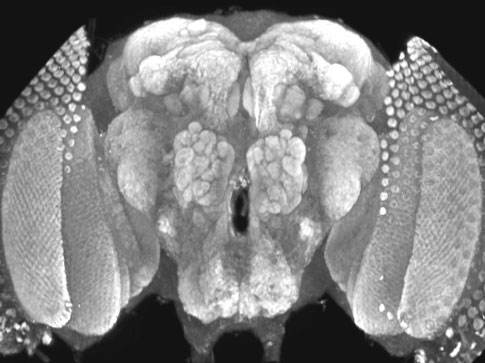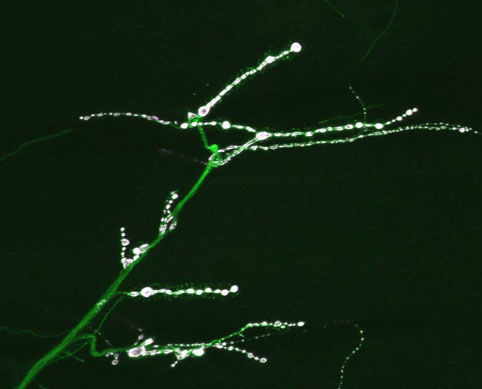 |
|
 |
 |
 |
 |
|
|
Bill Adolfsen(2000-2005) B.S. Biotechnology, 1999 Rutgers University Characterization of the Drosophila synaptotagmin family. Chemical transmission, mediated through secretion of neurotransmitter, is a fundamental property of neurons thought to subserve higher nervous system functions. The process can be simplistically envisioned to encompass two main events; 1) release of neurotransmitter by a presynaptic neuron initiated by calcium influx and 2) reception of that chemical signal by postsynaptic receptors. In recent years, biochemical and genetic studies of synaptotagmin I (syt I) have indicated an intimate role for this protein in the neurotransmitter release process. Extensive biochemical dissection of the syt I protein has uncovered a number of biochemical functions that suggest a role in various aspects of vesicle cycling, however evidence indicating which of these numerous biochemical interactions is physiologically relevant is still lacking. Genetic studies have also begun to provide valuable insight into syt I's function in vivo, however direct interpretations from these studies have been hindered by the observation that several synaptotagmin isoforms are present in higher eukaryotes. Recent completion of the Drosophila genome has made it possible to identify all the members of the synaptotagmin gene family within an organism. We have identified six additional synaptotagmins that show overall domain organization similiar to syt I. Apart from mutations in mouse syt I and syt IV and fly syt I, few other genetic manipulations of synaptotagmins have been reported. Thus the precise role of these isoforms is not known. In order to identify the functions of these additional syt isoforms, Bill carried out biochemical, genetic, and localization studies on these new isoforms. |
|